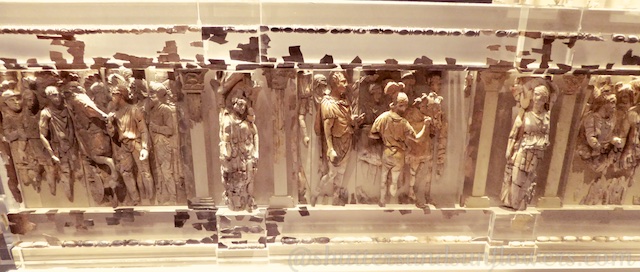The Terrace House of Ephesus are beautiful, stylish villa set on 4 levels, set around a spacious, el fresco courtyard where the sunlight dapples upon the hand laid marble floors.
The stunning and dramatic vaulted entrance hall leads to a series of spacious receptions rooms artistically decorated with hand painted frescos and murals.
Boasting all modern conveniences, running hot and cold water and the latest in floor central heating!
Oozing character and charm, guaranteed to impress from the minute you step across the threshold, you will never want to leave!
These were the properties of the wealthy Romans in Ephesus. They lived in style with truly every ‘modern’ convenience! During the 1980’s and 1990’s extensive excavations were done on the Terrace houses leading to a greater understand just how advanced this ancient civilization was!

At the beginning of the 21st century a new protective building was put over the Terrace houses.

The Terrace Houses were south west of Curetes Street, entered by a series of steps along narrow streets. The houses were several stories high, at the entrance were central open courtyards, surrounded by 4 columns, to allow in fresh air and light.

They were lavishly furnished and decorated. The wall paintings show mainly gladiators, caricatures and animals and include names of people, poems and declarations of love

This ivory frieze, from either a lintel or piece of furniture, was found in a burnt layer in Terrace House 2. It depicts a Roman victory under Emperor Trajan 98-117 A.D.

The houses were paved with marbles and mosaics featuring geometric patterns using small black and white stones.

These are the largest complex of mosaic floors from the Roman Imperial Period in Western Turkey. (1st century A.D. to 250A.D.)

The Basilica is where guests where greeted by the owner, purposely designed to give the impression of immense wealth and importance. This Basilica was built in about 160 A.D. The walls were marble and the barrel vault was decorated with frescos.

Most terrace houses had modern day luxuries such as hot and cold running water and central heating!

The latrine had benches on three sides, the excrements were drained by a channel.

The dining room was one of the most important rooms, music, believed to relax and heal the spirit was frequently played typically the flute, Kithara and lyre. Guests would sit half reclined on couches, eating at marble or bronze table which had lavishly decorated legs. This shows a typical shopping list of the time!

Local grapes, figs and pomegranates were eaten, just as today and copious amounts of excellent wine from the local vineyards. Olive oil was also produced and used, high quality for eating lower quality for fuel in the oil lamps. The lush hills around Ephesus still growing the same crops as several thousand years ago.

During the day most men would be out working in the Agora or at the baths, the women stayed at home often occupied with textile production and the children were taught at home.

In some ways so little has changed, in others so much……
Click here for information about Ephesus and where to stay





No Comment